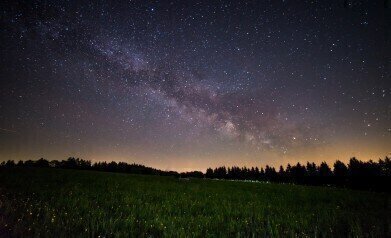News & views
Was the Milky Way Home to Ancient Forms of Life?
Feb 04 2015
Scientists have discovered five ancient planets orbiting one of our galaxy’s oldest suns. This has prompted the notion that ancient life may have once existed in the Milky Way.
Kepler 444 is a sun and is similar to ours and is some 117 light years away. Scientists determined the age of this sun by measuring variations in the brightness. A star’s brightness is governed by how fast sound waves travel from inside the star. This is dictated by its composition at the core, which is hydrogen. When a star gets older, the core changes and starts to convert the hydrogen into helium.
Tiny changes in this brightness were observed by using NASA’s Kepler space telescope. The sound waves that were contracting and expanding inside the light were measured. This was measured because when a star expands it gets cooler and dimmer, and when it compresses it gets hotter and much brighter. Studying the interior of stars is called asteroseismology.
“As you change the composition of the core, you change the speed at which sound waves moves through the star, and that affects the periods at which it resonates,” said Bill Chaplin, professor of astrophysics at the University of Birmingham. “Because we can do this asteroseismology, we can get very precise measurement of the age. It’s a very old star, over 11bn years old.”
The first star...?
By measuring these minute changes, scientists were able to deduce that Kepler 444 was one of the very first stars to light our galaxy.
In contrast, Earth was formed around 4.5 billion years ago, which makes the Kepler 444 system twice as old as ours.
Although the five planets are not able to support life as we know it on Earth, the discovery of this type of planetary system suggests that there could be life on more hospitable planets.
“This tells us that these kinds of planets formed very early in the history of the galaxy. If some fraction formed in the habitable zones around their host stars, then you have environments where life may develop, and it could have been there for a very long time,” said Chaplin.
The planets that orbit Kepler 444 are quite small, compared to ours. In size they range from Mercury to Venus and lie extremely close to the sun. Chaplin says that the habitable zone, where water forms in liquid, is around six times the distance the planets currently occupy.
All five of Kepler’s planets lie closer than our Mercury lies to our sun. This effects the temperature on the surface, which would have been permanently sizzling, with one year lasting just less than 10 Earth days.
From this discovery, astronomers now want to find other old planetary systems, in order to find similar ones within our galaxy.
More from the Milky Way
If you’re fascinated by this topic and would love to find out more,
Take a look at this remarkable image which shows two dramatic star formation regions in the southern Milky Way or you can find out how to analyse space dust.
Digital Edition
Lab Asia 31.6 Dec 2024
December 2024
Chromatography Articles - Sustainable chromatography: Embracing software for greener methods Mass Spectrometry & Spectroscopy Articles - Solving industry challenges for phosphorus containi...
View all digital editions
Events
Jan 22 2025 Tokyo, Japan
Jan 22 2025 Birmingham, UK
Jan 25 2025 San Diego, CA, USA
Jan 27 2025 Dubai, UAE
Jan 29 2025 Tokyo, Japan



















